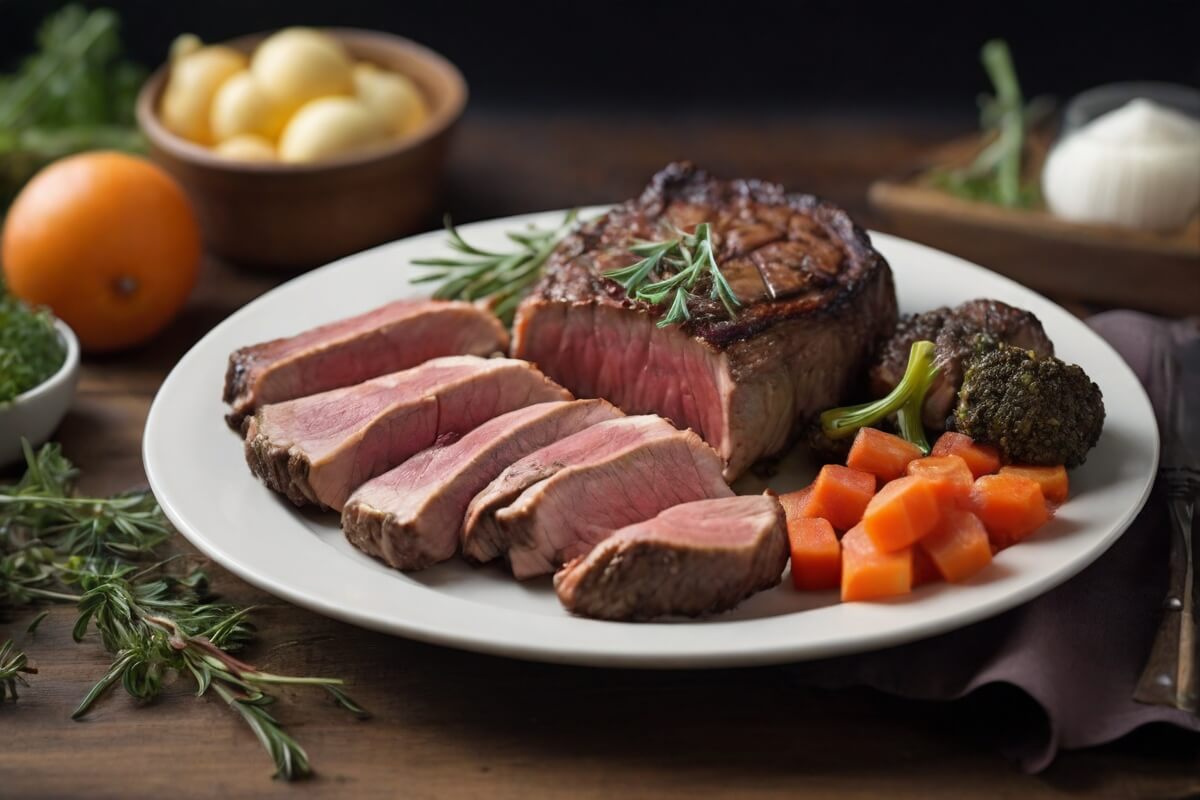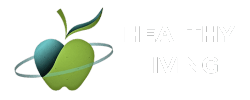The carnivore diet is a dietary regimen that involves eating only animal products, such as meat, fish, eggs, and dairy, while excluding all plant-based foods, such as fruits, vegetables, grains, legumes, nuts, and seeds.
It is a very restrictive and controversial diet, but it also has many proponents who claim that it can provide various health benefits, such as weight loss, improved mood, reduced inflammation, and enhanced performance.
In this article, we will guide you through the seven steps to start the carnivore diet, as well as some of the potential risks and challenges associated with it.
Discover How This Simple “Meal Plan” Changes My Life Watch the video below to see if this effortless “Way Of Eating” will work for you…
Why you should go on the carnivore diet

Why I Decided to Try the Carnivore Diet I have always been interested in nutrition and health, and I have tried different diets over the years, such as paleo, keto, and vegan. However, none of them seemed to work for me, as I always felt hungry, tired, bloated, or irritable.
I also struggled with some chronic issues, such as acne, allergies, and joint pain, that did not improve with any of the diets I tried.
I first heard about the carnivore diet from a podcast interview with Dr. Shawn Baker, a former orthopedic surgeon and world record holder in indoor rowing, who claimed that the diet had improved his athletic performance, strength, and vitality.
He also said that the carnivore diet was based on the evolutionary theory that humans are adapted to eat mostly meat, and that plant foods are unnecessary or even harmful for our health.
I was intrigued by his story, and decided to do some research on the carnivore diet. I found out that there were many other people who had tried the diet and reported positive results, such as Jordan Peterson, a famous psychologist and author of the best-selling book “12 Rules for Life”, who said that he had been following the carnivore diet for several months, and that it had helped him lose weight, improve his mental health, and cure his autoimmune disease.
He also said that his daughter, Mikhaila, had introduced him to the diet, and that she had experienced similar benefits, as well as overcoming her arthritis and depression.
I was curious to see if the carnivore diet would work for me, so I decided to give it a try. I started by eliminating all plant foods from my diet, and only eating meat, eggs, and cheese. I also drank water, coffee, and bone broth. I did not count calories or macros, and I ate whenever I was hungry, until I was satisfied.
How to start the carnivore diet

How to Start the Carnivore Diet in 7 Steps The carnivore diet is a very simple and straightforward diet, but it also requires some planning and preparation. Here are the seven steps to start the carnivore diet, based on my own experience and research.
Step 1
Do your own research about the carnivore diet Before starting the carnivore diet, it is important to do your own research and learn as much as you can about it. There is not a lot of scientific evidence to support the safety and efficacy of the carnivore diet, and it may pose some risks and challenges, such as nutrient deficiencies, electrolyte imbalances, kidney damage, high cholesterol, constipation, bad breath, social isolation, and food boredom.
Therefore, it is important to consult with your doctor before starting the carnivore diet, and to monitor your blood work, vital signs, and symptoms regularly. You may also need to supplement with some vitamins and minerals, such as vitamin C, magnesium, potassium, and calcium, to prevent scurvy, cramps, or osteoporosis.
You can also find more information, resources, and support from online communities, such as Carnivore Style or MeatRx, where you can read articles, watch videos, listen to podcasts, join forums, and get coaching from other carnivore dieters.
You can also follow some of the carnivore diet experts and influencers, such as Dr. Shawn Baker, Jordan Peterson, Mikhaila Peterson, Dr. Paul Saladino, Dr. Ken Berry, and Dr. Kevin Stock, who share their knowledge, experience, and tips on the carnivore diet.
Step 2
Set a clear goal Before starting the carnivore diet, it is important to set a clear goal for yourself. Why do you want to try the carnivore diet? What do you hope to achieve with it? How long do you plan to follow it? How will you measure your progress and success? Having a clear goal will help you stay motivated, focused, and accountable. It will also help you evaluate if the carnivore diet is working for you, and if you need to make any adjustments or changes.
Some examples of carnivore diet goals are:
- To lose weight and improve body composition
- To heal gut issues and reduce inflammation
- To improve mental health and mood
- To enhance athletic performance and recovery
- To treat or prevent chronic diseases
Whatever your goal is, make sure it is SMART: Specific, Measurable, Achievable, Relevant, and Time-bound. For example, instead of saying “I want to lose weight”, say “I want to lose 10 pounds in 30 days by following the carnivore diet and exercising three times a week”. This way, you will have a clear direction, a realistic expectation, and a way to track your results.
Step 3
Choose your elimination approach The carnivore diet is an elimination diet, which means that you eliminate all the foods that are not allowed on the diet, and only eat the foods that are allowed. There are two main approaches to do this: the gradual approach and the cold turkey approach.
The gradual approach is where you slowly and progressively eliminate plant foods from your diet, and increase your intake of animal foods. For example, you can start by eliminating grains, legumes, and sugar, then fruits and vegetables, then nuts and seeds, then spices and herbs, until you are left with only meat, eggs, and dairy.
This approach may be easier for some people, as it gives them time to adjust to the diet, and to deal with the cravings, withdrawal symptoms, and adaptation phase.
The cold turkey approach is where you immediately and completely eliminate all plant foods from your diet, and only eat meat, eggs, and dairy. This approach may be harder for some people, as it requires more willpower, discipline, and commitment, and it may cause more severe cravings, withdrawal symptoms, and adaptation phase.
However, this approach may also be faster and more effective, as it allows you to enter ketosis and fat adaptation sooner, and to experience the benefits of the carnivore diet sooner.
You can choose the approach that suits you best, based on your personality, preferences, and goals. There is no right or wrong way to do it, as long as you stick to the carnivore diet principles and guidelines.
Step 4
Consult your doctor Before starting the carnivore diet, it is important to consult your doctor and get their approval. The carnivore diet may not be suitable or safe for everyone, especially if you have any pre-existing medical conditions, such as diabetes, kidney disease, heart disease, or high blood pressure.
Your doctor may advise you to avoid or modify the carnivore diet, or to monitor your health more closely while on it. Your doctor may also prescribe you some medications or supplements to prevent or treat any potential complications or side effects of the carnivore diet.
You should also inform your doctor about your carnivore diet goal, plan, and progress, and ask them for any advice or feedback. Your doctor may help you adjust your carnivore diet according to your needs, preferences, and results. Your doctor may also help you evaluate the pros and cons of the carnivore diet, and decide if it is worth continuing or not.
Step 5
Have an action plan Once you have done your research, set your goal, chosen your approach, and consulted your doctor, you are ready to start the carnivore diet. However, before you dive in, you should have an action plan that outlines the details of your carnivore diet journey. Your action plan should include:
- A shopping list of the carnivore diet foods that you will buy and stock up on
- A meal plan of the carnivore diet recipes that you will cook and eat for breakfast, lunch, and dinner
- A schedule of the carnivore diet meals that you will eat and the times that you will eat them
- A backup plan of the carnivore diet snacks that you will have in case of hunger, cravings, or emergencies
- A support system of the carnivore diet friends, family, or online community that you will reach out to for motivation, encouragement, or advice
- A tracking system of the carnivore diet journal, app, or spreadsheet that you will use to record your food intake, weight, measurements, symptoms, and progress
- A reward system of the carnivore diet treats, activities, or prizes that you will give yourself for achieving your milestones or goals
Having an action plan will help you stay organized, prepared, and accountable. It will also help you avoid any confusion, frustration, or temptation. It will also help you enjoy the carnivore diet more, and make it a fun and rewarding experience.
Step 6
Implement your plan Now that you have your action plan, you are ready to implement it and start the carnivore diet. This is the most exciting and challenging part of the process, as you will put your plan into action and see the results. Here are some tips to help you implement your plan and succeed on the carnivore diet:
- Be consistent and committed. Follow your plan as closely as possible, and do not deviate from it unless necessary. Do not cheat or skip meals, and do not make excuses or rationalizations. Remember your goal and your reasons for doing the carnivore diet, and stick to them.
